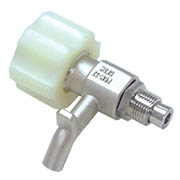

One of the points that he addressed was the importance of proper gasket materials. Gaskets are designed to ensure tight seals in equipment, pipes and/or pumps. Anytime that a gap appears in a piece of process equipment, it has the potential to trap and hold product, and hence encourage the growth of microorganisms. If such a situation occurs, the end result could be food poisoning or economic spoilage.
Keep in mind gaskets are not foolproof. Heating and cooling can create gaps that can trap product and/or harbor microorganisms. When a system that utilizes gaskets goes through a sterilization cycle, a gasket will expand and fill the gap it was intended to fill. But during cooling, the gasket may contract and during contraction create gaps that could also trap bacteria.
Similarly, Lelieveld points out "lively dead areas" or dead zones where material in pumps or other units might accumulate. To eliminate these, pumps must be designed to ensure that the interiors are continuously swept with product. This may be as simple as reorienting a pump to ensure proper flow through and draining. For example, if an infeed line comes into the center of a pump and the outlet is opposite and above the infeed, there is a chance that product may remain in the pump. If the outlet is below the inlet, the pump will be able to drain properly.
Some companies believe they can save money by fabricating equipment in-house. And while plant engineers are often very good mechanics, they are not trained in sanitary design principles nor do they have the equipment and facilities to ensure that the end products of their labor are easy to clean and maintain. As a result, one of the most common problems in plants is bad welds. Whenever two pieces of stainless steel are welded, they should be butt welded and polished smooth. If this is not done, the facility has created a perfect venue for microbial growth.
Lelieveld further encouraged processors to look at new technologies and materials such as ceramics, agion steel and perfluoropolyether derivatives to enhance the sanitary design of their equipment. Other technologies on the market that might help include: tapes that are both hydrophilic and lipophilic, meaning they are almost too slippery to allow microbial buildup, and plastics into which antimicrobials are incorporated.
The bottom line is that sanitary design is something that must be addressed from the largest to the smallest components of the system. Skimping on the quality of O-rings or gaskets may not seem like much, but it can have serious consequences. Oftentimes, it's the smallest detail that can pose the biggest problem.